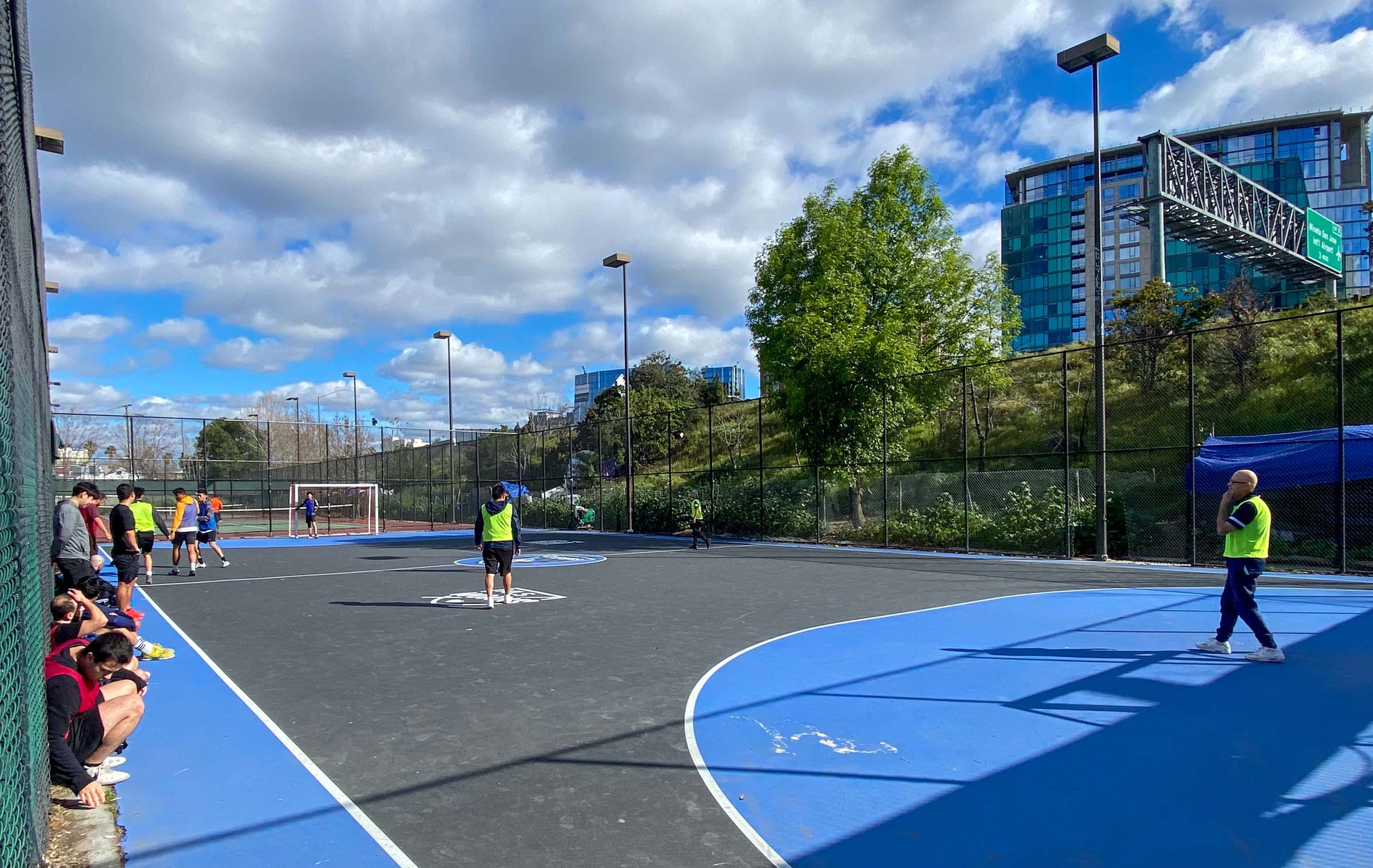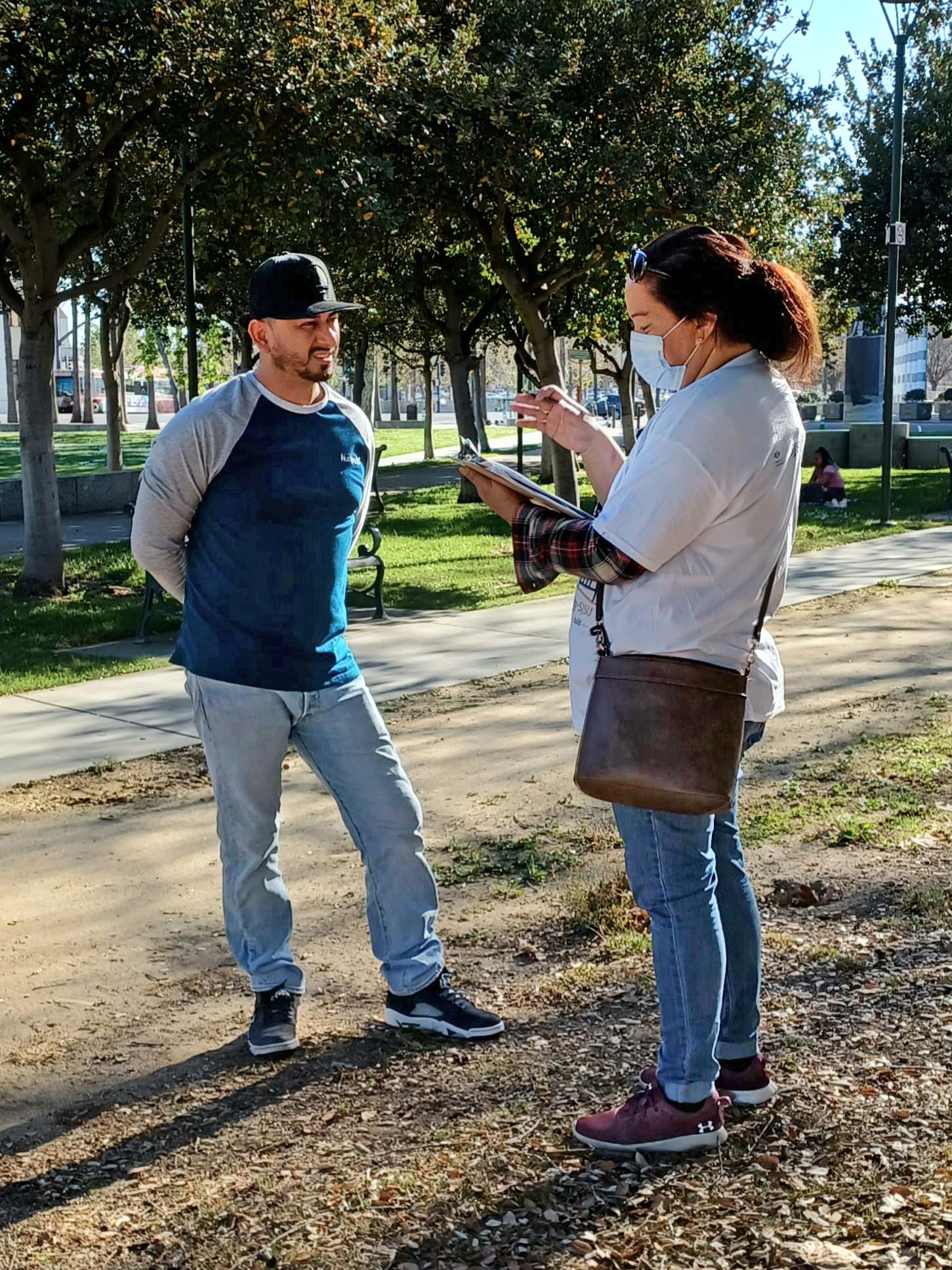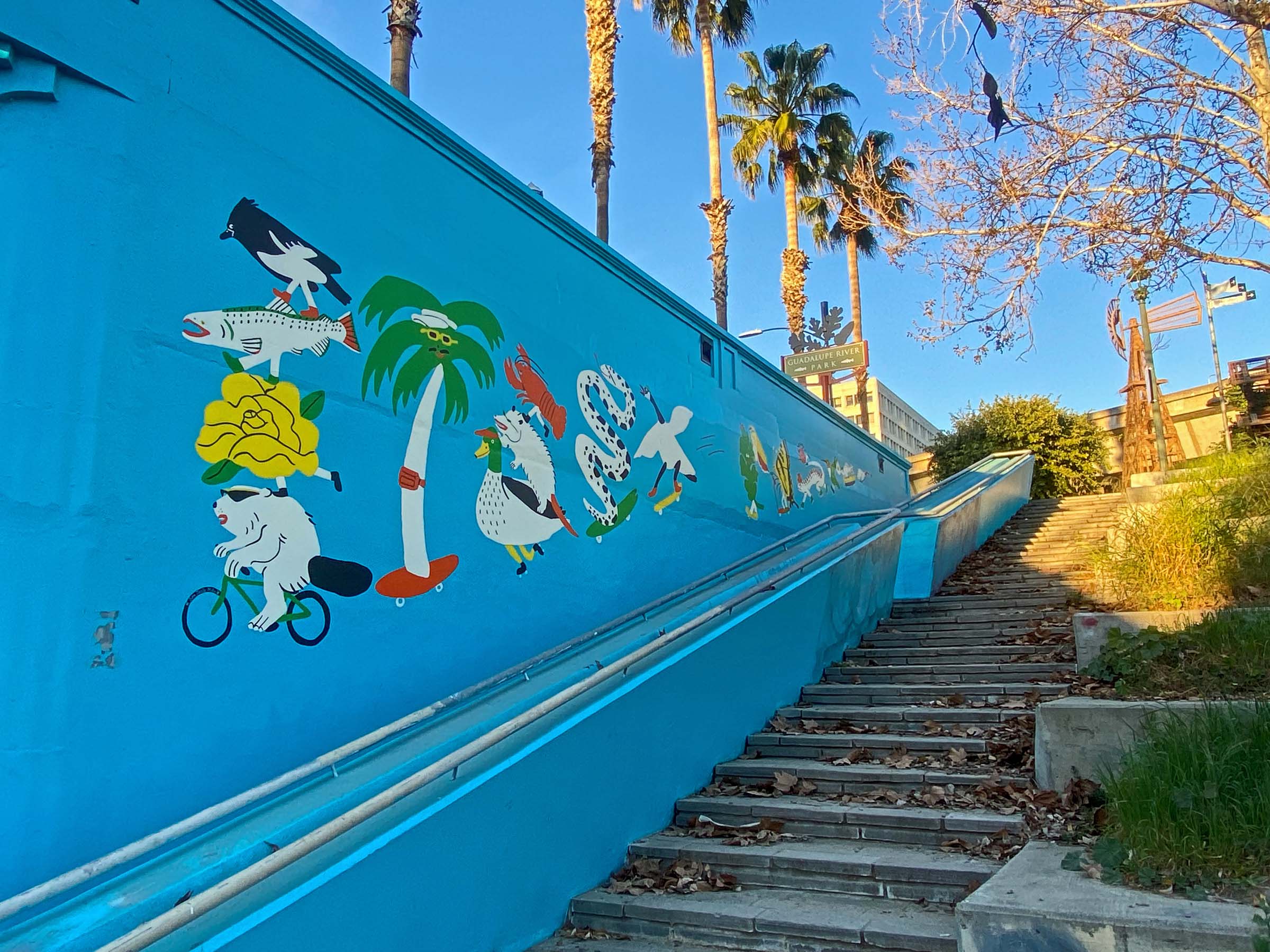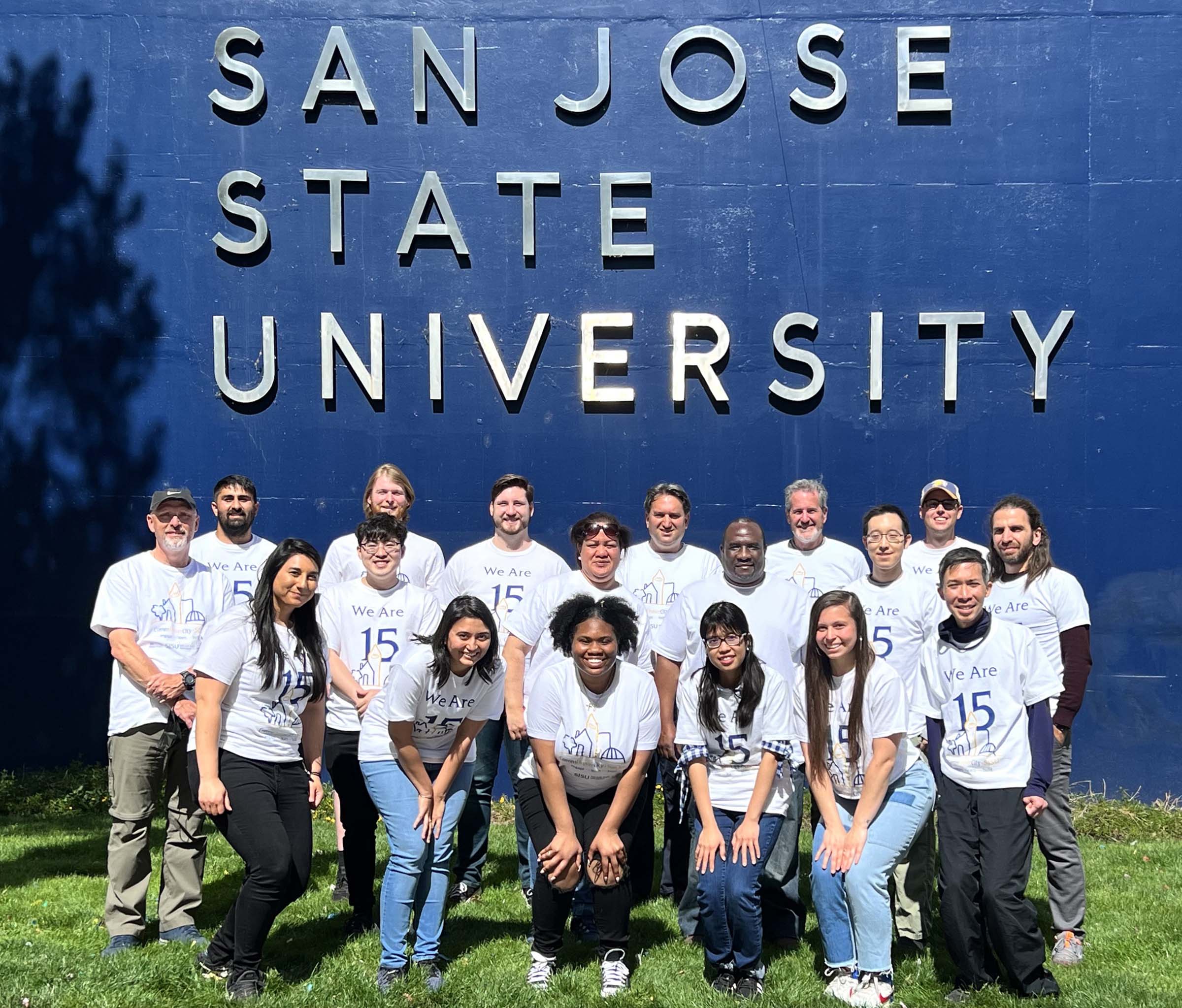By SJSU’s MURP Spring 2022 class, May 24, 2022
Public and civic spaces like parks are destinations where people can coexist and enjoy nature. These are places where all people, regardless of race or socioeconomic status, can visit to relax and connect with the natural environment. Civic spaces are vital to our daily lives because they allow different communities to come together and address the problems of social isolation and economic segregation.
The City of San José recognizes that these are valuable places and is committed to providing all residents with access to superb park and open space. One of those, the Guadalupe River Park, has the potential to become the city’s finest civic asset.
Located a few blocks west of Downtown San José, the Guadalupe River Park sits along the banks of the Guadalupe River and between Interstates 880 to the north and 280 to the south. Spanning more than 2.5 linear miles and encompassing over 254 acres, the Park is known as the “Central Park of San José.” Its long trails and paths make it a favorite among dog walkers, runners, and cyclists, and its Rotary Playground is a popular attraction for young families. The Park also houses multiple sports courts. One of which is a futsal court sponsored by the San José Earthquakes, a Major League Soccer franchise whose stadium is near the north end of the Park.

For the spring 2022 semester, San José State University’s Master of Urban Planning students partnered with the Guadalupe River Park Conservancy to study the Park and learn who is now using the Park and how, and to develop a set of programs for enhancing the visitor experience for all community members.
The guiding principles the students used to frame their research came from the Reimagining the Civic Commons (RCC) initiative. San José is an RCC “Expansion City.” RCC’s mission is to transform shared civic assets to foster engagement, equity, environmental sustainability, and economic development in cities across the country. The ultimate goal of the initiative is to increase financial investment in civic assets as a way to combat the alarming trends of increasing economic segregation, social isolation, and distrust.
RCC relies on four “outcomes,” or goals, to measure the value of civic assets. These include civic engagement, socioeconomic mixing, environmental sustainability, and value creation. These four goals are used to measure the value of civic assets based on a variety of indicators included within each goal.
Our spring 2022 class aimed to capture the stories of park users through a mixed-methods approach that divided the class into four teams, with each team assigned to one of the Park’s quadrants: Arena Green East, Arena Green West, the Trails, and the Gardens.
The teams conducted direct observation surveys to record the number of park users, their approximate age, race, if they were actively exercising, and their proximity to other park users. Through a set of survey questions provided by RCC, survey respondents were asked a series of questions related to RCC’s four goals. We asked about park users’ level of civic engagement, whether they felt safe when visiting the Park, the frequency and duration of their park visits, and much more.
To streamline the data collection process, the class leveraged Esri’s Survey123 platform to enable location-based analysis. Our research effort built off the work of a previous MURP class (fall 2020) which conducted the exact same study during peak pandemic conditions and smoke-filled skies during an unprecedented wildfire season.

Before conducting any surveys, the class needed to better understand the Park and its current condition. To achieve this, we participated in multiple walking tours through the park with Conservancy staff and also interviewed professionals working on different programs related to the Park.
One of the class’s first interviews was with Vanessa Beretta, senior development officer for the Homelessness Response Team (HRT) at the City of San José. Meeting with her was an essential first step as the Park currently has one of the highest concentrations of the City’s roughly 6,000 unhoused persons. She provided critical insights into how the City collects data on unhoused persons, the various services available to individuals, how the City’s HRT is funded, and the most significant challenges the City faces when it comes to addressing the homelessness crisis.
We also interviewed local artists who painted murals in the Park, City of San Jose staff who are closely familiar with the Park, and Conservancy staff who are intimately familiar with the Park’s facilities. By reaching out to professionals experienced with different aspects of the Park, the class was able to gain a deeper understanding of the Park’s various elements. The discussions with practitioners helped us draw more specific conclusions based on the survey results.

These are our key findings:
- The Guadalupe River Park draws visitors from outside San José. Nearly a quarter of those interviewed do not live in the city.
- Youth aged 18 and under, particularly teens, were the most underrepresented of park users.
- Between 2020 and 2022, the number of park users who drove to the Park increased by more than 10 percent, and the number of survey respondents who came to the Park other than by car decreased by 15 percent.
- From 2020 to 2022, the number of survey respondents who had volunteered at the Park rose by 9 percent.
- Mirroring the MURP class findings from 2020, park users generally felt safe during the day, but perceptions of personal safety were significantly lower at night.
- Many of the survey respondents attributed safety issues in the Park to the unhoused.
As part of this class effort, students were required to record podcast episodes related to different aspects of Guadalupe River Park. Topics range from “the value of public art” to “how park fees are assessed by the City of San José” to “how local vendors acquire business permits for tabling at community events.” Our podcasts are available on SoundCloud and can be found on the CommunityCasting Channel.

Top Row: Saagar Ghai, Zachary Johnson, Derek Hicks, Khashayar Alaee, Rick Kos (Instructor), and Matthew Schroeder
Middle Row: Korey Richardson, Kevin Lee, Elenoa Taufalele, Boniface Chifamba, Simon Tan, and Ahoura Zandiatashbar (Instructor)
Bottom Row: Marissa Mathiesen, Ruta Desai, Jo’leysha Cotton, Tam Tran, Gretel Gunther, and Brian Toy

